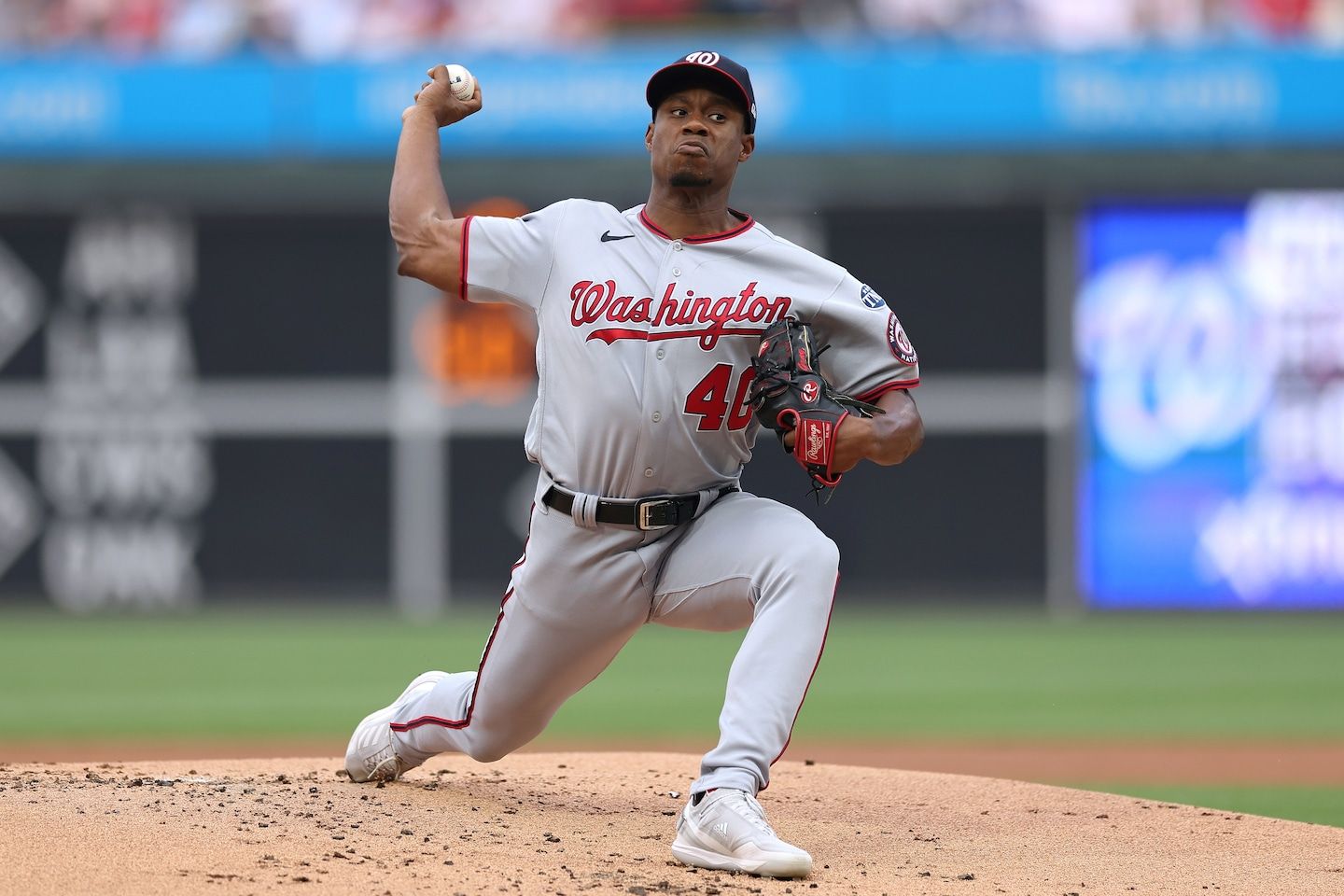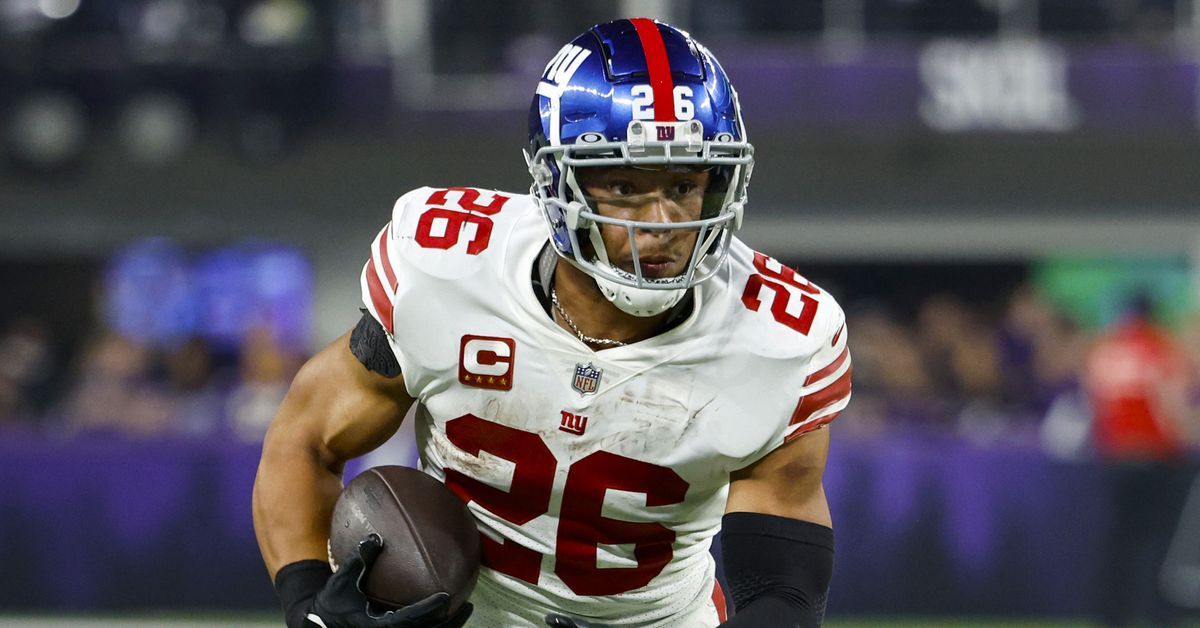Josiah Gray expands his zone and helps Nats to third straight win
Listen 5 min Comment on this story Comment Gift Article Share
PHILADELPHIA — Yes, Josiah Gray’s outing was a lot more than two fastballs Friday night. He threw 99 pitches, holding the Philadelphia Phillies to a run and six hits in six innings. In his second trip through the heart of their order, he raced ahead in counts with breaking balls, making Kyle Schwarber and Trea Turner flinch — bending their knees ever so slightly — before watching strike one. And after Gray found trouble in the sixth when the first two men reached, the right-hander induced two soft popups and struck out Bryson Stott, keeping a slim lead intact.
Once Stott swung through a 3-2 fastball, a pitch well above the zone, Gray turned away, went into a crouch and screamed. He had every reason to be fired up. But in the Washington Nationals’ 2-1 win over the Phillies, two earlier fastballs — a four-seamer to righty Alec Bohm, then a four-seamer to the left-handed Schwarber — marked a small step forward for Gray. Both clipped the low corner on his glove side. Both led to strikeouts looking. Both were worth dissecting, especially since Gray, 25, is one of the players whose growth matters more than the current results.
“It’s something that he’s worked on. He’s talked to [pitching coach Jim] Hickey about it, where he wants to locate his fastball to different hitters,” Manager Dave Martinez said. “That was a perfect example. We wanted him to get the ball glove-side down to those guys, and he executed really well.”
“It’s huge for just the repertoire being that fine-tuned,” said Gray, who struck out eight and issued the Nationals’ lone walk. “My mechanics feel good. … When you throw [low glove-side fastballs] as a pitcher, you love it, because it kind of locks a hitter up. To throw a few of those today, it’s always good.
Advertisement
“I want to continue to do that, continue to work in the bullpen in between starts … because there are a lot of strikes down there. I can expand the zone with a lot more of my pitches when I’m establishing that pitch.”
Last season, as Gray trudged through six months of growing pains, he often relied on his secondary pitches to finish hitters. His slider is his best weapon. He has a solid curve, too, and recently added a sweeping slider, a complement because of its horizontal movement. Gray’s four-seam fastball, his worst pitch in 2022, has improved since he expanded his arsenal and added a sinker. So against the Phillies’ order, he was able to start with his off-speed and bring heat late in counts.
The 2-2 fastball to Bohm ran back over the plate at 96 mph, freezing the third baseman to end the fourth. The 3-2 four-seamer to Schwarber was low and in, one of the slugger’s coldest zones. But with that pitch and that spot, the margin for error was extremely thin. Outside of this season, Schwarber hammers four-seam fastballs. He also launches pitches that are in and anywhere between the high and low corner. Gray dotted it perfectly, though, leaving Schwarber shaking his head in the batter’s box.
Advertisement
Gray allowed a majors-worst 38 home runs last year, 24 of them on his four-seam fastball. Through 17 starts in 2023, he has yielded 12 homers, only one on his four-seamer. That stark difference has helped him post a 3.30 ERA.
“To [Schwarber], you have to be smart with your stuff,” Gray said. “His batting average might not be high, but we all know that that’s kind of deceiving, because he can take you out of the ballpark at any time. You have to be on the corners; you have to lean into your stuff and be that much more fine.”
Before the series opener, the Nationals put Patrick Corbin on the bereavement list and promoted lefty reliever Jose A. Ferrer in his place. Martinez also went through a small handful of injury updates, including another setback for Sean Doolittle. The 36-year-old has a patella tendon strain in his right knee. He suffered the strain while pitching for Class AAA Rochester, his latest stop in an attempt to return from the elbow surgery he underwent last summer. He could soon head to West Palm Beach, Fla, where outfielder Victor Robles and reliever Carl Edwards Jr. are rehabbing.
Advertisement
Robles, sidelined with back spasms again, has not progressed to any baseball activities. Edwards, dealing with right shoulder inflammation, is playing catch on flat ground. And regardless of whether Doolittle joins them, he’s expected to be sidelined for a good while.
But after the Nationals faced the Phillies with zero left-handed relievers in early June, Martinez had two in his bullpen Friday. Ferrer, 23, is a hard thrower still finding his command. Joe La Sorsa, 25, throws a sinker that averages about 87 mph, rounding out his arsenal with a slider and change-up. But even with this rush of versatility, the best case was for Gray to pitch six innings, then hand the ball to Mason Thompson, Kyle Finnegan and Hunter Harvey, all nice and rested after a day off. And that’s exactly what Gray did.
Behind him, once Gray stranded two in scoring position in the sixth, Thompson recorded two outs, Finnegan notched four and Harvey handled the final three. The offense, paced by Stone Garrett’s two-run shot in the second, spoiled multiple chances to stretch its advantage. But because of Gray, Thompson, Finnegan and Harvey, two runs were enough. The Nationals (33-48) have won three in a row and five of six.
“It feels big because those guys in there are really pumped up,” Martinez said. “I’m happy with the way these guys are playing.”
Gift this article Gift Article
Source: The Washington Post


